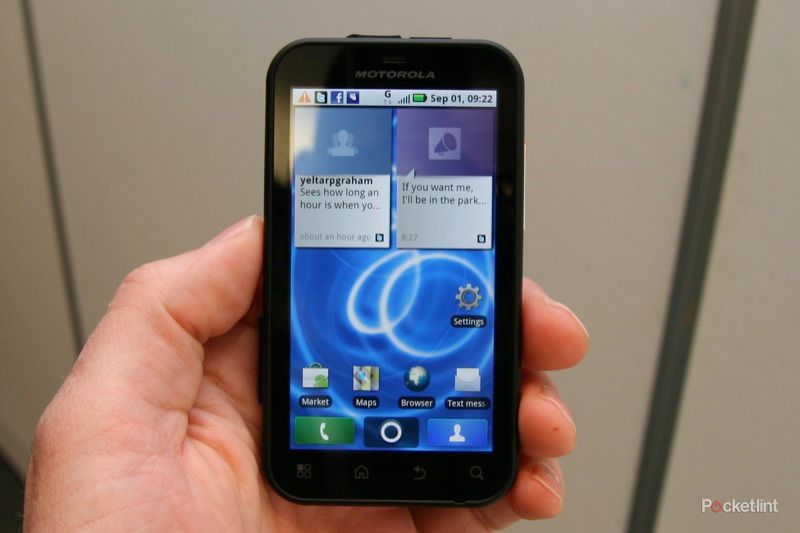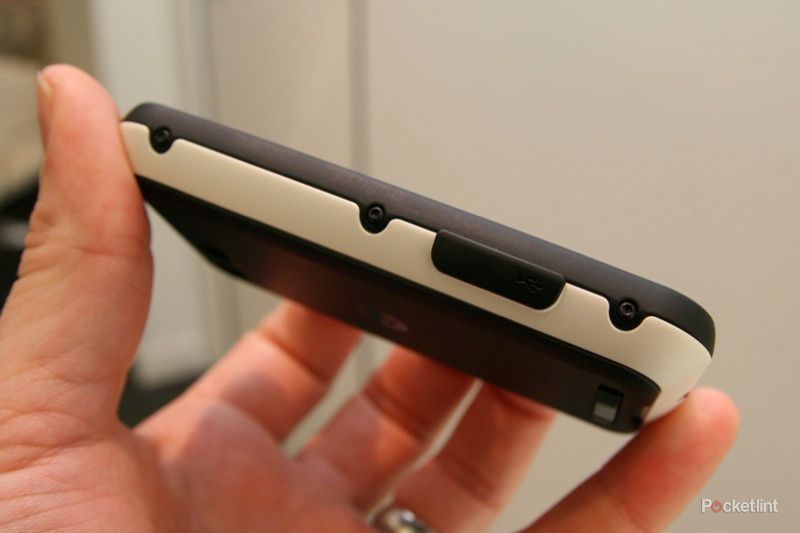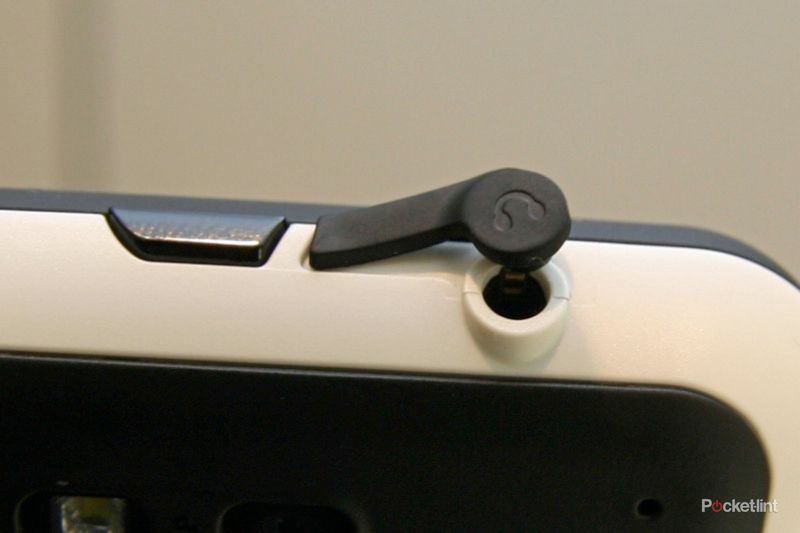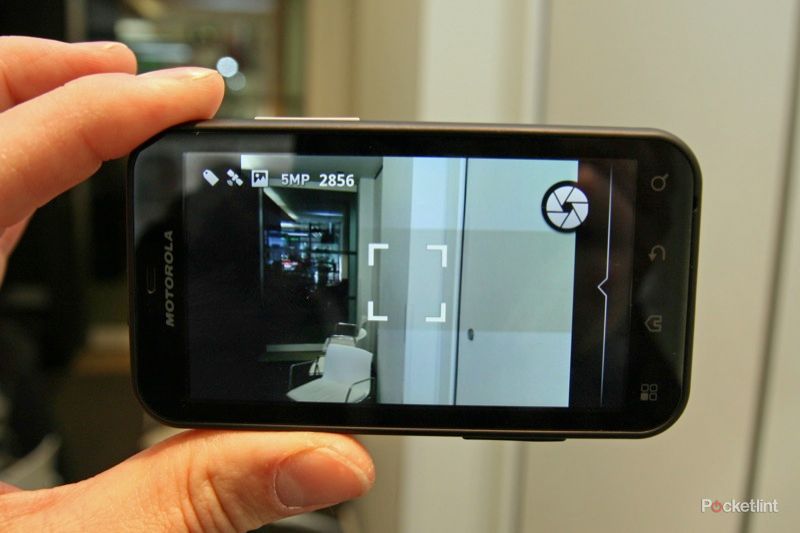Looking for our full review of the Motorla Defy? You can find it here.
Our quick take
Our first impressions of the Motorola Defy are good. It may be a little chunkier than some of its rivals, like the HTC Legend, and it doesn't have the headline specs of the Milestone 2, the HTC Desire or the Samsung Galaxy S, but it's a fun looking and feeling phone, that won't care if it has the odd pint spilt on it.
In our brief time using the phone it seemed fast enough to respond when navigating the operating system and the on-screen keyboard was nice and fast for entering text.
We'll have to see if it really does stand up to a little abuse, and how things like the battery and camera perform when we take a long hard look at the Defy in a full review.
For oodles more photos, check out our Motorola Defy photo gallery.

First Look
| FOR | AGAINST |
|---|---|
|
|
Looking to appeal to those who lead a tough life is the just-announced Motorola Defy, claiming to be "life proof". Motorola were keen to point out that this isn't a rugged phone as such, just one that offers a little extra protection against day-to-day hazards, like puddles, pints and parties.
Conforming to IP67 standards - meaning complete protection against dust ingress and water immersion up to 1 metre - much of this protection comes down to design. The tough looks will appeal to some, with exposed screws on the outside making the phone look every bit as tough as its rating suggests.
But this isn't a Sonim smash-me-against-the-wall phone, as the 3.7-inch edge-to-edge capacitive touchscreen display on the front shows. Although it may be finished in Gorilla Glass, too much rough and tumble will see the screen taking the damage.
To protect the ports you'll find rubber plugs that fit over the Micro-USB and 3.5mm headphone jack. These may be a little fiddly if you spend a lot of time opening and closing to attach headphones, for example, but at least it will stop pocket-lint ingression into every opening of the device.
On one of the devices we found that it no longer accepted the rubber plug, which kept coming out and we've seen this on tough devices in the past. This might be down to the sample we saw being a pre-production sample and having passed through the hands of many admiring execs and journos, but it's something to consider if you're thinking of getting the Defy as your daily work phone in a dirty environment.
The finish is in tough plastics and we've seen two different colour schemes, in black and white. It looks attractive enough, although it perhaps won't get as many admiring glances as your average high-end handset. It also is reasonably compact despite its level of protection, measuring 59 x 107 x 13.4mm. It feels solid in the hand too, with the curved edges making it comfortable to hold.
Around the body of the handset you have typical controls, a power/standby button, volume controls, but no dedicated button for the 5-megapixel camera on the back. There is an LED flash, if you find such things useful for your mobile snapping, but you could always use it as an emergency torch should you take the Defy camping.
We took a look at the camera interface, but weren't able to test it during our hands-on session with the Defy. We did note that it only supports 640 x 480 resolution video capture, putting it behind the top phones which offer HD video.
Across the bottom of the screen are typical and familiar controls for Motorola fans, offering menu, home, back and search. These buttons are touch sensitive and provide easy navigation around the device.
Sitting at the core you'll find an 800MHz processor with 2GB of memory, although you'll be able to expand on this with a microSD card. These specs put the Defy in the mid-range, even if the 3.7-inch screen is generous; it isn't the brightest we've seen, but seemed vibrant enough at first glance.
Running Android 2.1, you also don't get all the bells and whistles that the Milestone 2 - launched at the same time - gets. You'll miss out on proper Flash video integration, for example. What you do get, though, is Motoblur
Motoblur integrates your social networks to keep you connected and bring all these happenings into your phone. This gives you a rich interactive experience, with contacts collating their relevant updates and so on. Add this to Android's existing uber-connectivity and you'll always be in the picture.
Elsewhere you get all the hardware connectivity you'd expect, including HSDPA, Wi-Fi b/g/n, Bluetooth 2.1 + EDR. It also supports DLNA, so you'll be able to easily share your captured content with compatible devices when you return from your wild adventures. You can also turn your phone into a mobile hotspot, with Motorola boasting about how good the aerials are in its devices.
The home screen presents you with customisable displays (up to 7) and you'll be able to configure these with the usual shortcuts and widgets, including Motorola's Motoblur widgets. Swiping from side-to-side was slick with no sign of lag on the device that we saw.
You also get a proximity sensor, light sensor and accelerometer, in addition to the GPS, giving you Google Maps Navigation for free, so you'll never get lost on your intrepid adventures.
We found the keyboard to be nice and responsive when we bashed out a few test messages and the phone comes preloaded with Swype for those who prefer not to get into a tapping frenzy.
To recap
First impressions are good - this looks like an appealing mid-range Android device



